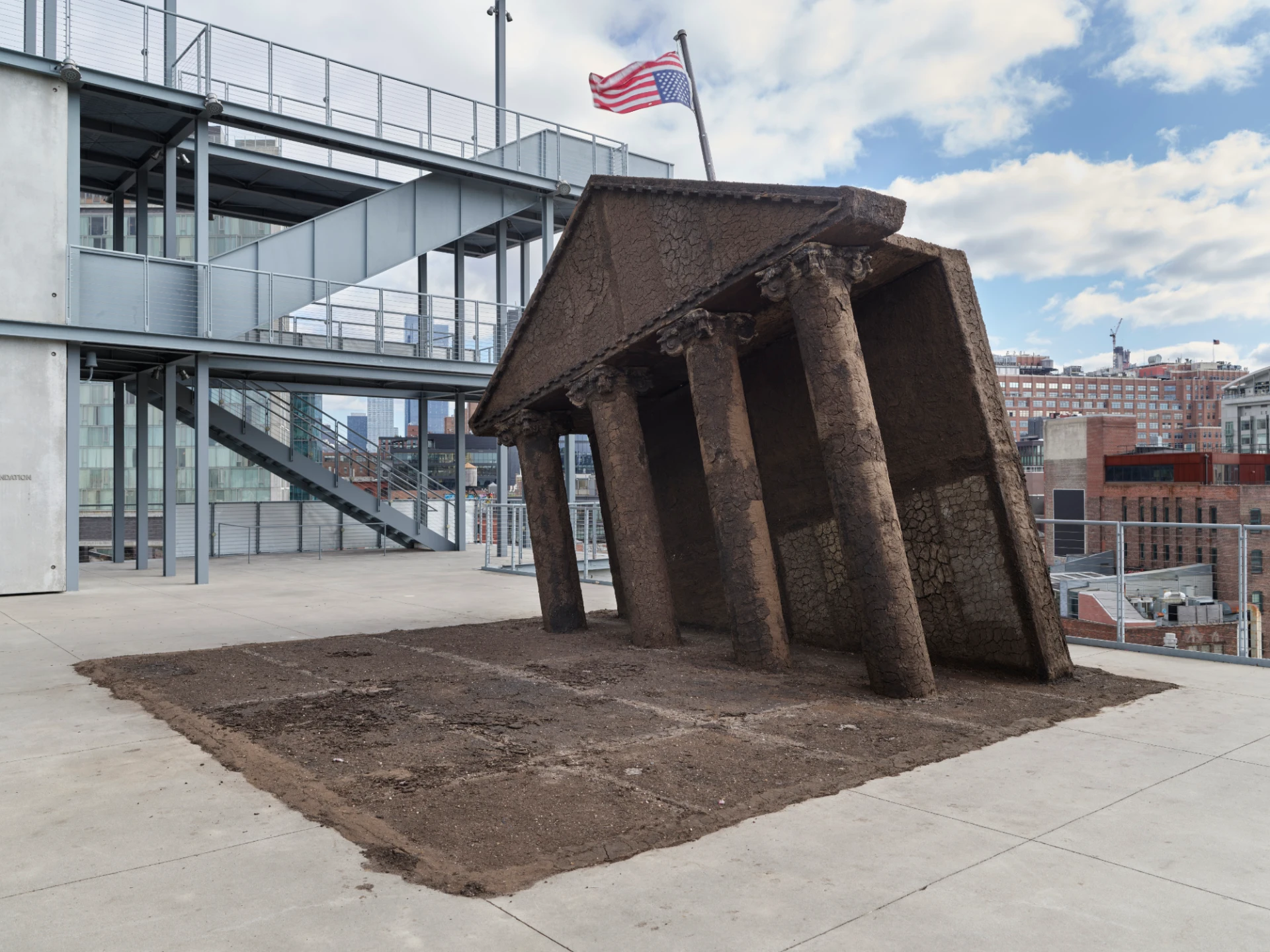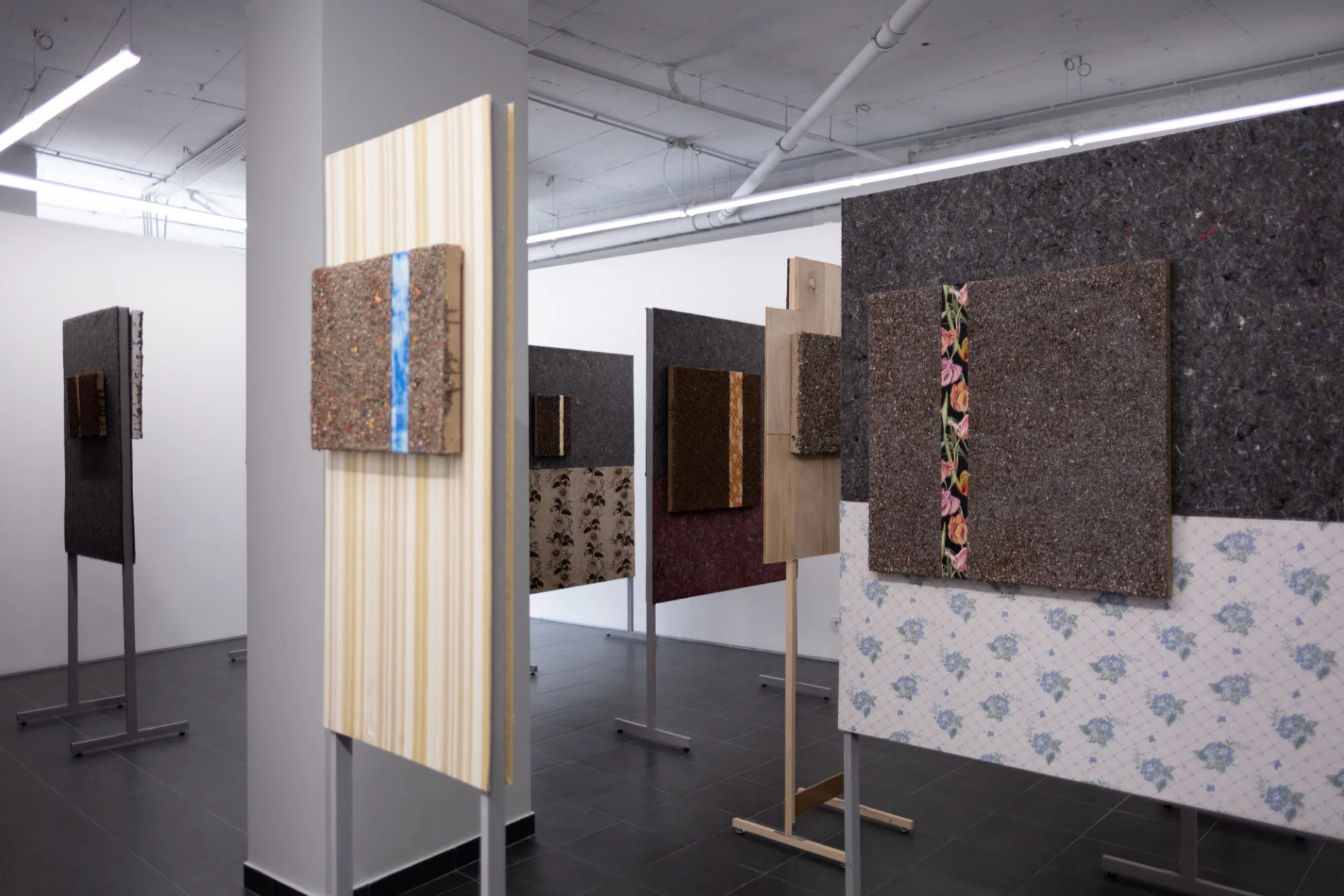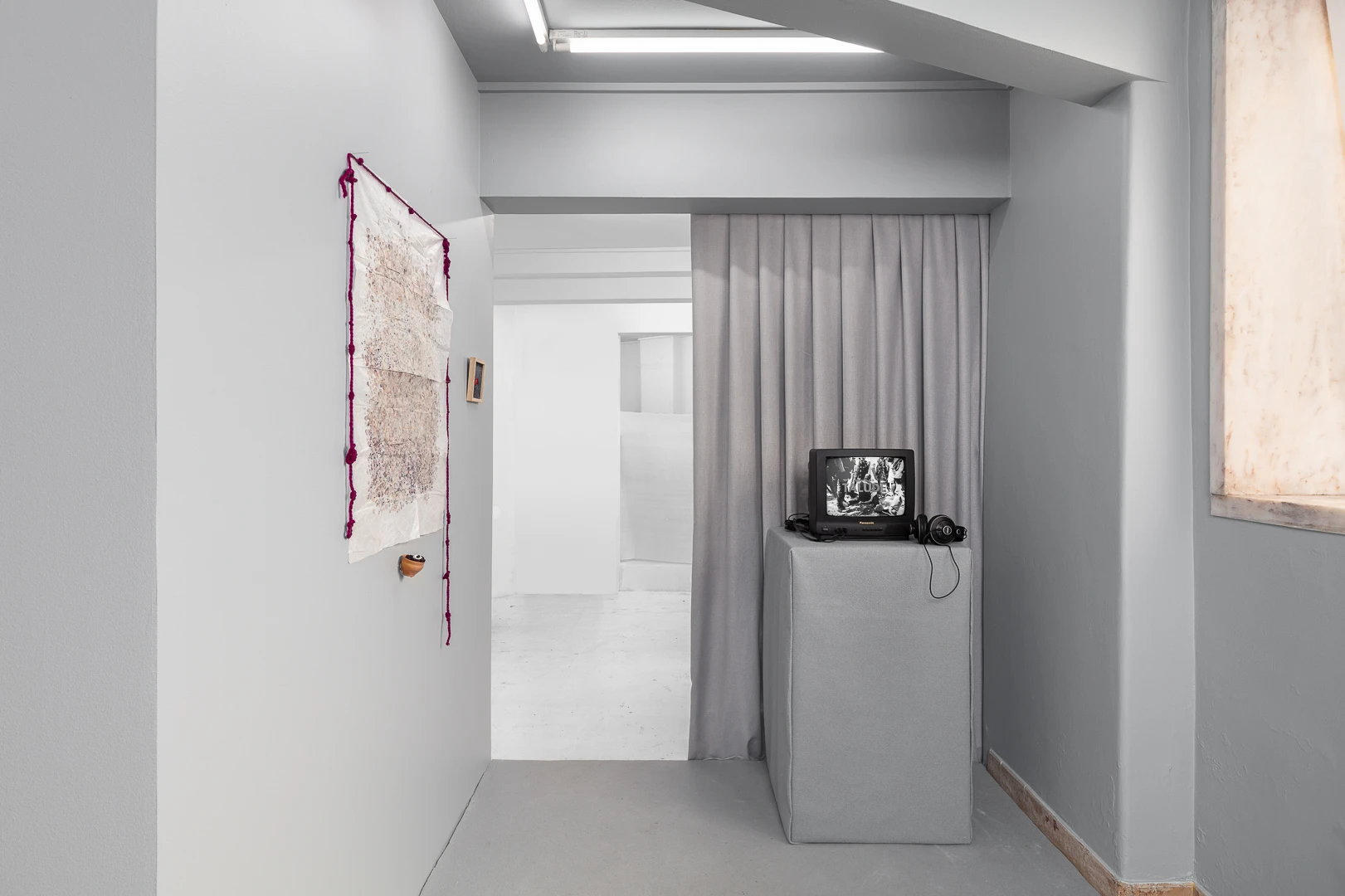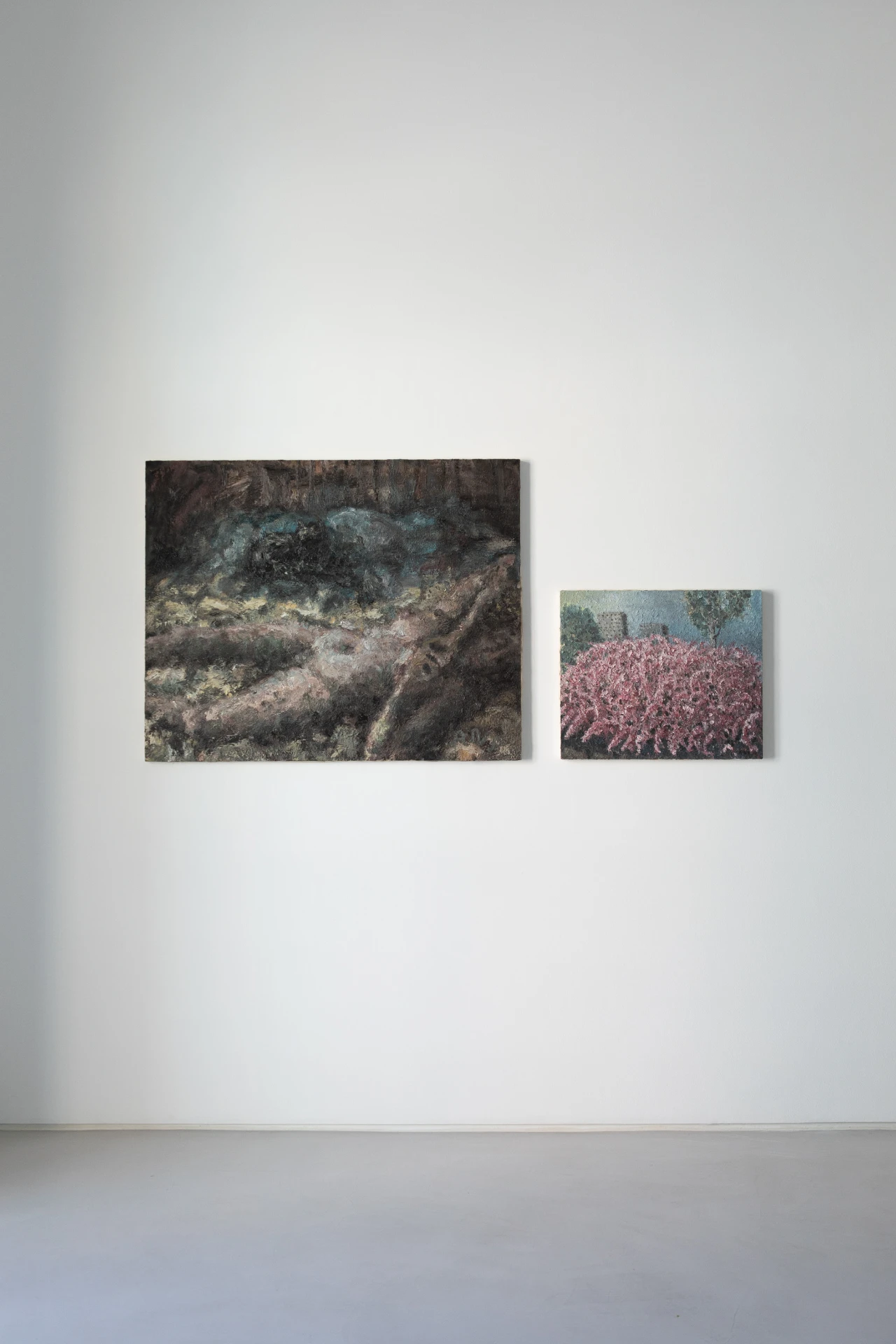article
Family Portrait, by Dave and Tony
The family portrait carries a promise. It presents unity, defines and immortalizes roles. But when drawn from individual memory, it becomes a mirror of bonds, absences, hierarchies, and silence. It reveals who stands out, who disappears, who protects, who threatens. Dave and Tony's exhibition, "Family Portrait", begins with this fracture, not to reconstruct the family image, but to reimagine it and expose what it conceals.
Scared animals return home, regardless of whether home is safe or frightening 1.
The exhibition is a brutal mise-en-scène of what is often avoided—the violence that structures family relationships, the early internalization of guilt, shame, and fear. It is also a collective self-portrait that proposes a chosen family model that resists traditional and heteronormative logic. The two artists' joint practice embraces identity as a political territory, where the scars of childhood and the desires of the present intertwine to produce an alternative family portrait.
The canvas drawings—BRAINMESS (PEE FACTORY) and BRAINMESS (PEA FACTORY)—function as time capsules that transport us to the artists' experiences. A job in a pea factory that paid for art school, a humiliating childhood accident, a car accident that forever transformed the family structure, and the humor and sarcasm that encapsulate all these experiences.
This logic is repeated in Rat Rug, where a large, cartoon-like skinned rat replaces the traditional animal trophy rug, inverting the logic of domestication and conquest. Rather than celebrating victory over a wild animal, the piece inscribes into the domestic space a figure typically associated with trash, infestation, and rejection. The rat, a symbol of the undesirable, assumes a central position in the exhibition space, celebrating marginality within the domestic realm.
The portraits displayed on the gallery walls also subvert the aesthetics of the familiar. These figures evoke the composition of a family portrait, but distort it: the faces are visibly artificial and expressively ambiguous, at once intimate and unrecognizable. They are presences that challenge and haunt us throughout the exhibition.
The inflatable sculpture GAG, a tense, opaque black balloon, occupies the space like a body about to burst. The image is clear in its ambivalence: it both evokes a closed system on the verge of collapse and evokes the violence of everything stifled in domestic life. It materializes all the silences and omissions that occur within the family. The title is also revealing: the word "gag" refers both to the act of suffocation (physical or symbolic choking) and to the object used in sexual practices of domination, where pleasure intersects with restraint and violence. By conjuring this universe, the sculpture links family to a device that often stifles sexuality.
Emptiness becomes a monument in Picket Fence (2025). Two cement molds of holes dug by the artists themselves rise like sculptures that, elevated on plinths, take the form of busts. It is an operation that embodies absence and aims to materialize the void. Next to them, three excrements cast in tin serve as a small reliquary. It’s a tribute to the three dogs that accompany Dave and Tony, loyal, and affectionate everyday presences that follow them everywhere. Together, the two busts and the excrements propose a contemporary and non-normative family portrait: intimate traces that embody loss, memory, and love.
Dave and Tony's visual language combines the tragic and the comic in a deliberately artificial aesthetic. Humor and theatricality seem to operate as strategies of distancing and survival.
The question of legacy appears in the installation Graves (2025), where two tombstones with the artists' names engraved on crosses mark the gallery floor. It’s a lucid irony that stages a symbolic death while anticipating the desire to remain together in death as in life: side by side. The installation claims the right to a place on earth, a gesture that refuses erasure even after death.
Family Portrait inscribes the queer body in a territory marked by omissions, expectations, and pacts of silence, exposing the conflict between belonging and exclusion. The artists return to the idea of family to address loss, grief, and trauma. And by dismantling the idealization of the family as a safe and structured space, they reveal it as an unstable force field where love, fear, desire, and trauma coexist. There is courage in returning to the place that wounded us, not to inhabit it, but to rewrite it with other forms of belonging.
1 Van der Kolk, B. A. (2015). The body keeps the score: brain, mind, and body in the healing of trauma. Penguin Books. Pag. 36
BIOGRAPHY
Laurinda Branquinho (Portimão, 1996) has a degree in Multimedia Art - Audiovisuals from the Faculty of Fine Arts of Universidade de Lisboa. She did an internship in the Lisbon Municipal Archive Video Library, where she collaborated with the project TRAÇA in the digitization of family videos in film format. She recently finished her postgraduate degree in Art Curatorship at NOVA/FCSH, where she was part of the collective of curators responsible for the exhibition “Na margem da paisagem vem o mundo” and began collaborating with the Umbigo magazine.
ADVERTISING
Previous
article

28 Jul 2025
On the road: Berlin
By José Pardal Pina
Next
interview

28 Jul 2025
Interview with Chrissie Iles
By Maria Inês Mendes
Related Posts



-nwaos.jpg)